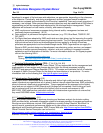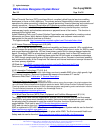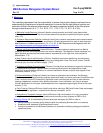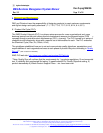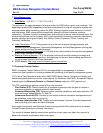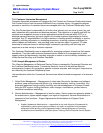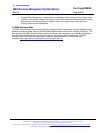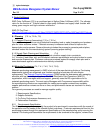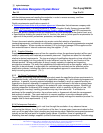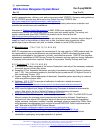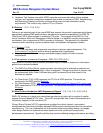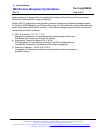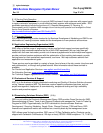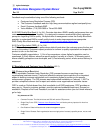
EMG Business Management System Manual
Doc # epsg1026386
Rev. 112
Page 22 of 35
The user of any printed copy of this controlled document is responsible for verifying it is the correct version prior to use. Hard copies are uncontrolled.
This manual contains links to subordinate documents that are restricted to Agilent personnel only
and may not work if accessing this document from a public site.
The current version is available at the EMG Document Map website: http://emg.communications.agilent.com/quality/bms/040318_docMap.asp
(c) Agilent Technologies, Inc. 2002, AGILENT TECHNOLOGIES
with the division personnel needing the materials, in order to ensure accuracy, and then
communicate the requirements to the supplier.
Quality requirements specifications consist of:
Standard purchase-order and purchase-agreement information that references company-wide
quality requirements, including reference to Agilent‟s Supplier Quality System document 5951-
1665. http://www.agilent.com/quality/supplier_quality_system_rqmt.pdf and ESD requirements.
Business-specific standard terms and conditions, if any are developed at the division level; and,
Specifications dictating the product form, fit, function, etc. and any other specific requirements for
approval of the product, procedures, processes, and equipment.
Current document retention standards only require controlled retention of quotations,
contracts/agreements, confidential non-disclosure agreements, and licensing agreements accepted
from/with suppliers. Where records are retained, it is by the buyer/manager of the supplier and/or
their extended team of internal customers using the supplier. (7.4.2)
8.2.2 Supplier Selection
Suppliers are selected by personnel from the operation where the purchased product will be used,
usually in partnership with materials procurement personnel. Suppliers are asked for information
relative to desired requirements. The type and extent of qualification depends on how critical the
product and supplier is to the continuity of order fulfillment, and the form, fit, and function of the
ultimate product. Where qualification is done it usually consists of ordering and inspecting
prototypes or samples. The entity that establishes the relationship with a new supplier, and/or for a
new item to be purchased, is responsible for maintaining the records from the selection and/or
qualification process, including the criteria and management approval in accordance with the
entity‟s sourcing requirements. (7.4.1)
8.2.3 On-Going Conformance Assurance
The process for ensuring that the purchased product meets the specified purchase requirements is
implemented locally, within the framework of applicable company, BU, and divisional processes and
practices. In general, incoming material shipments are checked to see if any special handling or
inspection is required, otherwise it is assumed fit for use and delivered to the user or storage area.
Material requiring inspection is flagged in the material & order management system. Material not
requiring inspection is delivered to its storage location, which is normally at the point of use. FGI
(finished goods inventory) handling procedures may vary from site to site. If verification is
performed at the supplier‟s location, the purchase order or Agreement will state the arrangements
and method of release. The usual method is to request suppliers to provide outbound quality
control testing reports. Materials procurement personnel usually manage the resolution process if a
supplier fails to meet requirements. (7.4.3)
8.2.4 Performance Evaluation
Supplier performance is managed in real time through the escalation of any observed issues
concerning the delivery, form, fit, and function of the item. In some cases, issues are tracked online,
such as on-line part failure history tracking and engineering alerts. Materials procurement personnel
typically act as the focal point for supplier quality issues. In addition, there is a guideline for
evaluating how well strategic suppliers (critical to business) have met requirements. The technology



